Sustainable Design
HTC’s thinking on the development of sustainable products is to starts from the product life cycle, and adopts different measures at various stages through innovative thinking. It uses the concept of The Precautionary Principle to carefully select the ones with lower environmental risks. It complies with the internationally Restriction of Hazardous Substances Directive, and develops sustainable products that are more environmentally friendly.
HTC actively promotes sustainable design, improves recycling and resource reuse efficiency through product life cycle considerations, and reduces the use of hazardous substances to reduce environmental impact. Our specific sustainable practices and achievements in five aspects, including modular design, application of recycled materials, enhancement of energy efficiency, recyclability design, and reduction of hazardous substances in the sustainable design practice of products, hoping to create more environmentally friendly and sustainable products and make a contribution to environmental protection.
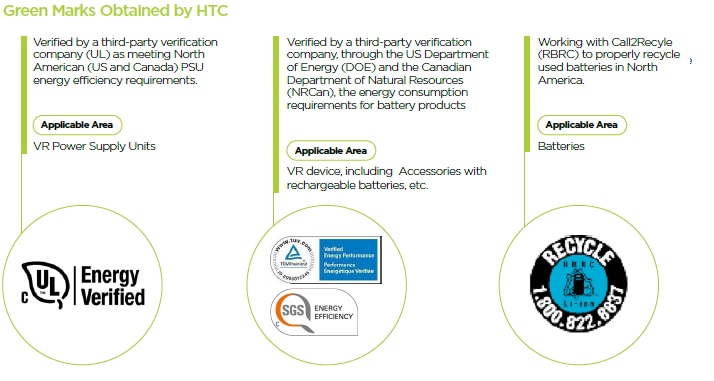
Modular Design
The VIVE XR Elite headsets have a detachable battery, which allows users to easily replace the battery by themselves rather than having to discard the whole device. This not only extends the product’s usable lifespan but also reduces waste and optimizes usage of nonrenewable resources. In addition to battery modules, peripheral accessories related to HTC VIVE products will also develop in the direction of modular design in the future, which not only has the potential for customization, but also allows accessories to be repaired independently, improving product quality and maintainability. These advantages not only help improve the competitiveness of products, but also help reduce environmental impact.
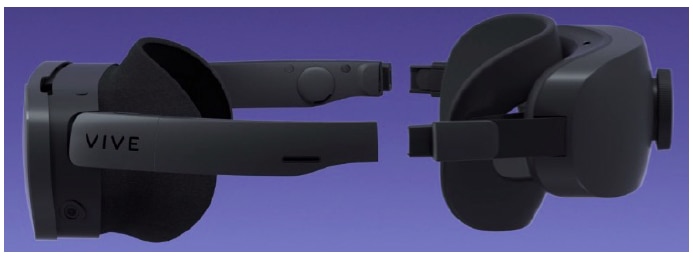
Recycled Material Applications
HTC emphasizes the use of sustainable materials, giving priority to low-carbon materials containing recycled plastics to create plastic enclosures that are both durable and environmentally friendly. This will not only effectively reduce the dependence on virgin plastics, reduce the consumption of petrochemical resources, but also significantly reduce carbon emissions, and contribute to the realization of low-carbon product goals. These efforts not only demonstrate our commitment to environmental responsibility, but also respond to the growing consumer demand for sustainable products, and we believe that through such design and innovation, we can move the industry towards a greener and more sustainable direction.
Enhancement of Energy Efficiency
We concentrate on energy-saving from the early design and R&D phase. All power supplies used for HTC products must comply with the relevant international energy consumption specifications, including California Energy Commission (U.S.), EU ErP Eco-design Directive and are approved with energy efficiency verification by third-party verification companies. All of their energy efficiency meets the United States Department of Energy criteria of Level VI which is the highest and defines the standby power shall be less than 0.1W. The lowest consumption of currently use chargers is 0.025W, which is much lower than the standard by 75%. The power adapters that HTC uses are already compliant with the new version of the EU Regulation for External Power Supplies (EU 2019/1782).
We refer to the regulations of the U.S. Department of Energy and Natural Resources Canada as standards to reduce the energy consumption of the battery charging process. This is used to improve the charging efficiency of our products and thus reduce the ongoing energy loss after a full charge. Not only can the energy consumption of the whole product be minimized, but also the goal of energy conservation and carbon reduction can be achieved.
Product Recyclability Design
HTC considers waste reduction and resource reuse in the early stages of product R& D and uses the concept of circular economy to transform waste products into high-value recycled materials, extending the product life cycle and reducing the environmental burden. We prioritize the use of highly recyclable plastic materials to ensure that products can be recycled at the end of their useful life, reducing their environmental impact. The recyclability of the products has been dismantled, simulated and tested by a third party, and the recycling rate of all products, including VR and smartphone, significantly exceeds the EU WEEE Directive standard (55%). HTC also thinks attentively about the recyclable design of accessories and introduced paper rings to replace plastic materials for packaging fixed cables in 2023.
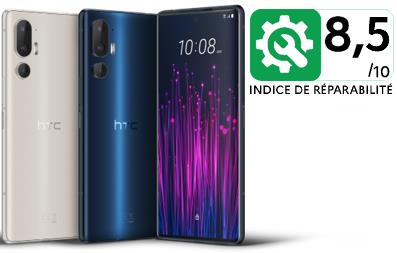
|
The new U24 pro phone product continues its commitment to sustainability with a consistent high-recovery design philosophy. HTC phones continue to achieve excellent results in compliance with regulations, with a highest dark green label of 8.5 points in the French "Repairability Index" (8.4 points for the U23 pro in 2023), and high praise for five criteria: product use, manufacturing instructions, degree of disassembly, accessory availability, spare parts price, and follow-up repairs. This not only means that HTC phones have a longer service life and excellent repairability, but also helps to reduce the product scrap rate, reducing the environmental impact of the end product.
|
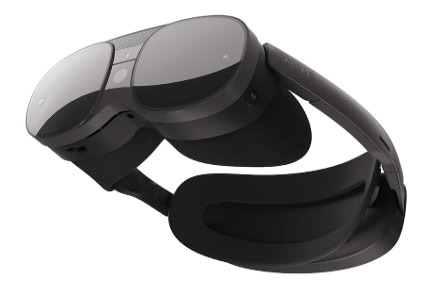
|
VIVE's next-generation VR headset VIVE XR Elite weighs only 92 grams more than its predecessor, which not only does not affect the convenience of wearing, but also greatly improves the specifications of the hardware, bringing consumers better control and a more amazing virtual and real experience. In terms of recycling rate, the percentage of recyclable materials can reach 76.7% after actual dismantling and testing by a third-party laboratory, which is 39.5% higher than the recycling standard of WEEE.
|

|
The VIVE Ultimate Tracker is an all-in-one device that allows consumers to track their head, hands, feet, and waist at the same time, and is designed with continuity and compatibility in mind. This external accessory is compatible with VIVE XR Elite, VIVE Focus Vision, and select third-party PC VR headsets. Through its compatibility with different product ranges, VIVE Ultimate Tracker extend the life of their devices and incorporate circular economy concepts into virtual reality technology. More than half of the components are compatible with the previous generation of products, reducing the waste of maintenance materials and resource consumption, and further promoting the effective use and recycling of resources.
|
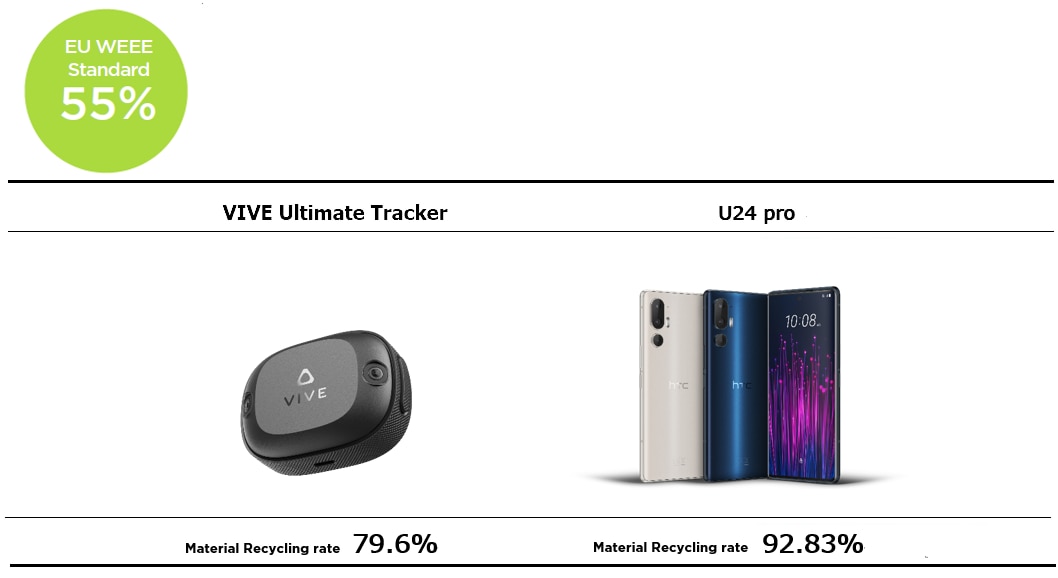
Hazardous Substance Management
HTC HSPM Policy:Design and Manufacture Green Products, Meet Regulations and Customer Requirements, Continuous Improvement to Protect the Environment.
Always taking environmental protection and consumer health as integral factors of our consideration, we strictly adhere to the Restricted Substances List in all our product designs. This list encompasses international environmental regulations and customer requirements, which not only restricts the ten substances regulated by RoHS, but also prohibits the use of toxic substances such as polyvinyl chloride and brominated flame retardants. We require suppliers to submit testing reports and continuously monitor regulatory changes to ensure a pollution-free production that aligns with our environmental goals. We also demand that our suppliers comply with relevant regulations to safeguard consumer health and the environment.
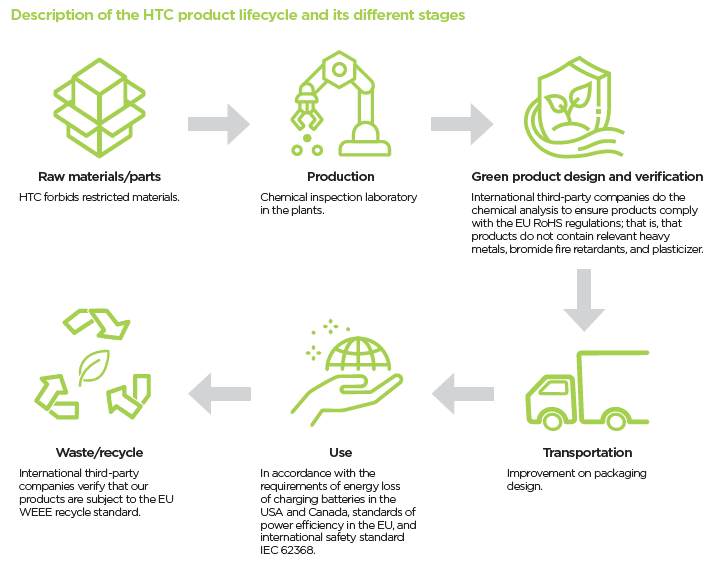
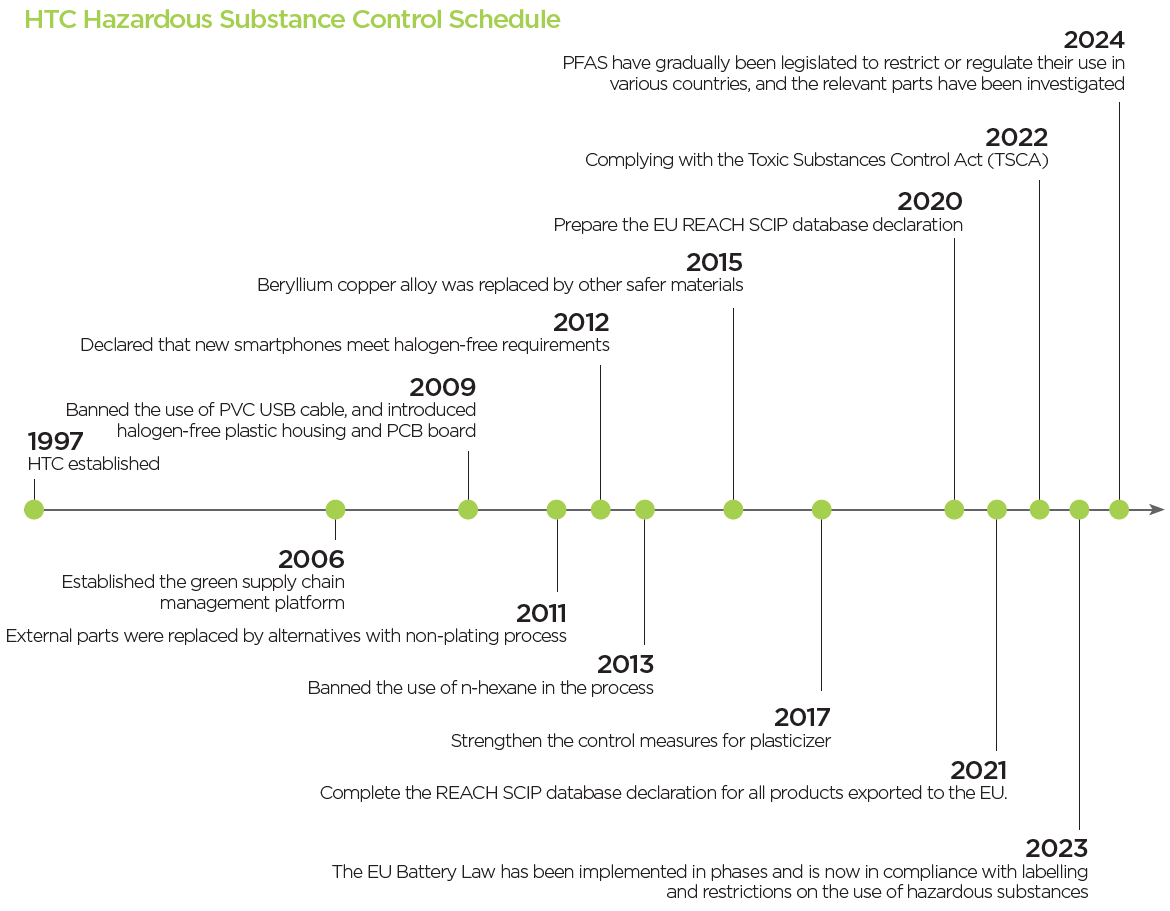
Active in Compliance with Standards
All HTC products are verified by international public certification companies, such as SGS, TUV, and ITS. Chemical analysis is carried out to ensure compliance with the EU environmental directives. In addition, HTC has updated to the latest version of IEC62368 for all products in the market with CB certificates provided. By adhering to the concept of precautionary principle, we comprehensively regulate the known hazards of our products to provide a higher level of safety in their use.